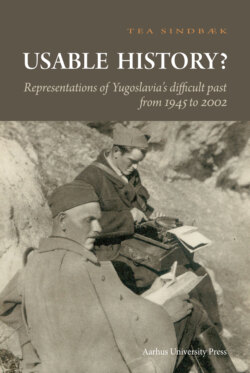Читать книгу Usable History? - Tia Sindbaek - Страница 16
Partisans
ОглавлениеThe Partisans were headed by the Yugoslav Communist Party, under command of its secretary general, Josip Broz Tito. Outlawed since the early 1920s, the Communist Party was a small but disciplined and devoted organisation, trained in underground work, and most probably consisted of approximately 12,000 members when the war started in 1941. The communists engaged actively in resistance fighting after the German attack on the Soviet Union on 22nd June 1941 and Party cells in many parts of the country organised Partisan detachments. During the autumn of 1941, the main effort was in Serbia, where the Partisans, often in cooperation with Chetniks, took control of areas in western Serbia.
It soon became clear that Chetnik and Partisan aims were incompatible. The programme of socialist revolution was scarcely hidden from the Partisans’ agenda. Though the great majority of their forces in the first years of the uprising were Serbs, the Partisans advocated inter-ethnic cooperation and aimed at including all nationalities, as opposed to the Chetniks’ exclusively Serbian appeal.7 Furthermore, the two parties disagreed on strategy: While the Chetniks preferred to postpone large scale fighting until an expected allied landing, the Partisans insisted on fighting the occupiers regardless of what the cost might be for themselves or for the Yugoslav population. This disagreement was sharpened as the cruel reprisal politics of the German administration made the Chetniks desperate to avoid wasting Serbian lives.
In November 1941 German and Yugoslav collaborationist forces, assisted by some Chetnik groups, drove the main Partisan force out of Serbia. From then on, Chetniks and Partisans fought each other ruthlessly, both with the aim of deciding Yugoslavia’s post-war political system. The resistance fighting was thus increasingly combined with a Yugoslav civil war.8 At the local level the picture was often immensely complex. In Eastern Bosnia, Partisans and Chetniks cooperated until early 1942. Throughout the war, groups of resistance fighters switched from Chetnik to Partisan lines or the other way around, and sometimes whole regiments shifted from the Axis side to that of the resistance.9
Upon their defeat in Serbia, the Partisan main force and headquarters moved via Sandžak to Bosnia. Large offensives by combined occupation and Ustasha forces, the Italians often cooperating closely with Chetnik units, only succeeded in ousting the Partisans from their positions, from which they moved on to different mountain areas. In 1941-1942, the Partisans fought with obvious revolutionary zeal, and did not hesitate to use terror against real or imagined opponents, supposed class enemies and Chetnik sympathisers. This politics was imposed most thoroughly in Montenegro, Herzegovina and Eastern Bosnia. In Eastern Bosnia in the spring of 1942, Partisan warfare aimed mainly at destroying the Chetniks.10 But as these strategies proved counterproductive, the Partisans changed their line. By autumn 1942, the socialist goals were downplayed, and the Partisans began to present their aim as being an all-Yugoslav, anti-fascist, national liberation.
